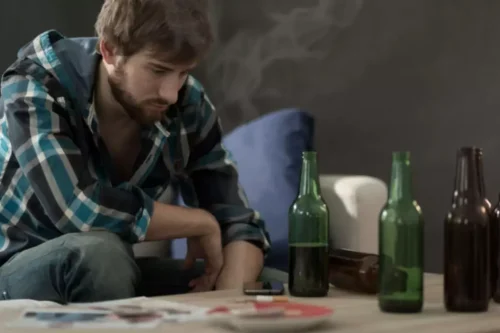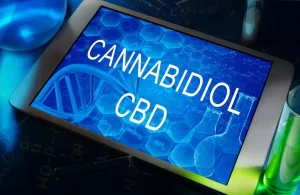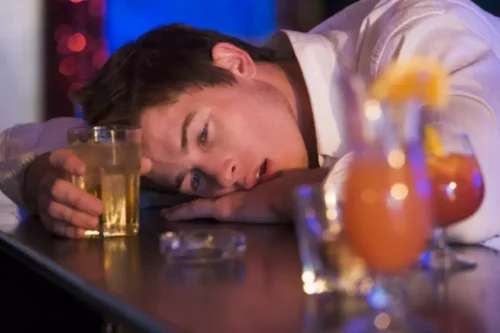Although rosacea is commoner in females, the incidence of rhinophyma is higher in males. Rhinophyma typically afflicts white males between the age of 40 and 60 years, and is more common in men with English or Irish descent. There is no cure for rhinophyma, and it typically does not go away without surgery.
What Is Rhinophyma?
In any case, using the medical term for alcoholic nose is a helpful way to stop spreading misinformation and decrease the stigma surrounding rosacea. At the end of the day, it is just a skin disorder and should not be used to make assumptions about someone’s drinking habits. Before discussing potential treatment options for alcoholic nose, it is important to understand whether or not alcohol itself is truly to blame.
- Because of this, people who drink a lot or increase their alcohol intake over time and also have rosacea may experience increased side effects — including alcoholic nose.
- Drinking alcohol can wreak havoc on the vascular system as the brain fails to regulate its functions.
- Having a big nose, even as a result of rosacea, is not necessarily a sign of alcoholism.
Treatment for Alcoholism & Mental Health in Ohio
Rhinophyma causes the nose to become even more disfigured due to the progressive dilation of the nasal vessels as well as the involvement of cysts and pustules. While rhinophyma can affect anyone, it is more common in men over 30 with fair skin. Those with a family history of rosacea also increases the likelihood of developing rhinophyma (alcoholic nose). It is impossible to completely reverse an alcohol nose at such a stage with just medication. Individuals with an alcoholic nose become prone to such negative and unjust social opinions, leading them to shut everyone out.
Does Alcohol Abuse Cause Rhinophyma?
One’s complexion, genetics, and ancestry factors are quite often observed to be contributors to the alcohol red nose. However, the two dominant causes of alcohol red nose are majorly connected to ethnicity and heritage. If the condition is left unmanaged and worsens, there are chances that the redness will spread across the cheeks and sometimes even start turning purple. In addition, the nose usually starts looking bumpier and even more disfigured.
Therefore, when severe rosacea spreads to the nose, it is termed rhinophyma (literally meaning “nose swelling”). Notably, it should not be assumed that someone with this condition suffers from alcohol use disorder. Another side effect that is generally connected to excessive consumption of alcohol is an alcohol red nose. Popularly known as “alcoholic nose,” the condition is when someone develops a red, enlarged, bulbous-looking nose. It is commonly believed that the alcoholic red nose stems from alcohol abuse or chronic addiction.
Mixing Adderall and Alcohol: Risks and Precautions
If you or someone you love suffers from an addiction, getting help can be a positive step forward. There are places that can provide counseling, customized care, and support alcoholic nose through medical alcohol detox so they can get back to living their best life. If you have any questions about substance abuse, contact our professionals today.
Alcohol does not cause rhinophyma, but it can aggravate a rosacea flare-up. Rosacea flare-ups could contribute to continued growth of a bulbous nose. However, there are several treatments that you can try to control symptoms and reduce visible redness.
Not Sure How to Quit Drinking? Here’s Your Guide
- The material is not a substitute for qualified medical diagnoses, treatment, or advice.
- The symptoms might be very mild for an amount of time and then the cycle is repeated again.
- However, the real reasons for the skin condition are not yet evident, though many factors have been studied to influence it.
- Alcoholic myopathy can affect appearance by decreasing muscle mass, making arms and legs appear thin and weak.
- We don’t know why drinking may increase the risk of getting rosacea.
This typically results in the eyes becoming swollen and red in appearance. The shoulders and chest are also susceptible to looking more flushed or red after drinking alcohol. Until recently, doctors believed that rosacea and rhinophyma could be caused by alcoholism. In less severe cases, medication may be effective in treating rhinophyma. Topical and oral antibiotics reduce inflammation and redness, and other topical medications minimize inflammation.
- Keep reading to learn more about the causes, symptoms, diagnosis, and treatment of rhinophyma.
- According to the Mayo Clinic, rosacea symptoms often come in episodes.
- Heavy consumption of alcohol was considered to be the cause of rhinophyma for many years.
- While drinking cannot directly cause the condition, excessive drinking can trigger or aggravate the problem.




